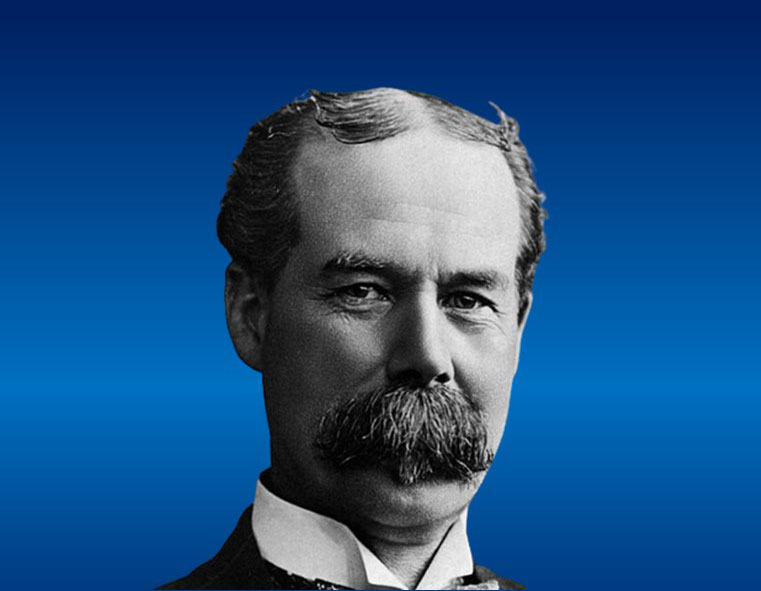Soccer Personalities to Remember: Sir Thomas Johnstone Lipton
Who is Sir Thomas Johnstone Lipton?
Sir Thomas Johnstone Lipton can easily be described as a self-made man, a merchant, a company founder, a yachtsman, and a philanthropist.
The last name of Sir Thomas Johnstone Lipton sounds familiar because of a brand of tea known as “Lipton Tea.”
Indeed, Sir Thomas Johnstone Lipton was the founder of the Lipton Tea that is enjoyed across the world.

Birth, Parentage and Childhood
Sir Lipton was born in Gorbals, Glasgow, Scotland, on May 10, 1848, to his Ulster-Scots parents, Thomas Lipton senior and Frances Lipton (née Johnstone).
Sir Thomas Johnstone Lipton had four siblings; three brothers and one sister. Unfortunately, all died in infancy, but he, the youngest, survived.
His childhood was somewhat rough, financially speaking, as his father did any type of job, he could lay his hands on just to keep life going, including working as a labourer, as a printer, and running a shop, where ham, butter, and eggs were sold.
Because of the difficult situation in his family, he could not have a good and consistent education.
He started his education like every other child, but left school as early as thirteen years just to work and augment his parents’ limited income.
Fortunately for him, he found a job as a printer’s errand boy, and later as a shirt-cutter.
Out of his strong desire to survive, junior Lipton decidedly, in 1864, signed up as a cabin boy on a steamer plying between Glasgow and Belfast
In that process he became interested in sea life, as well as excited about the stories told by sailors who had travelled to the United States.
After he left the steamer company, he immediately used the wages he had saved to find his way, aboard a ship, to the United States of America, where he spent five years working and travelling across the length and breadth of the country.
While in America, he did several jobs, including at a tobacco plantation in Virginia, as an accountant and book-keeper at a rice plantation in South Carolina, as a door-to-door salesman in New Orleans, a farmhand in New Jersey, and finally as a grocery assistant in New York.
He returned to his homeland, Glasgow, in 1870, and started helping his parents to run their small shop in the Gorbals.
In the year following the year he returned to Glasgow, he established his first provision shop named “Lipton’s Market.”
Fortunately for him, the Lipton’s Market enterprise proved to be successful, a situation that encouraged him to grow the business into a chain of groceries, first across Glasgow, the rest of Scotland, until finally he had stores throughout Britain.
While Lipton was expanding his empire, tea prices were falling and demand was growing among his middle-class customers.
In 1880, Lipton invested in the young stockyards of Omaha, Nebraska, founding a large packing plant in South Omaha which he sold to American interests in 1887.
In 1888, when his empire had grown to 300 stores, he entered the tea trade and opened his tea-tasting office.
He started bypassing traditional trading and wholesale distribution channels (most UK tea-trading was focused in London’s Mincing Lane) in order to sell teas at unprecedentedly low prices to the untapped poor working-class market.
In order to provide his shops with goods Lipton bought tea gardens and in doing so, he established the Lipton tea brand, which remains in business as a subsidiary of Unilever.
Soccer Personalities to Remember: Sir Thomas Johnstone Lipton
His Connection and Contribution to Sports
Sir Thomas Johnstone Lipton was not only a successful businessman, but also a sports personality. He left some indelible marks in football, yachting, and rowing to prove this point.
Yachting
Sir Thomas Johnstone Lipton had a very strong interest in yachting, and King Edward VII and King George V were said to have shared their interest in yachting with him, and enjoyed his company.
He was the most persistent challenger in the history of the America’s Cup yacht race.
Between 1899 and 1930, he challenged the American holders of the America’s Cup through the Royal Ulster Yacht Club five times with his yachts called Shamrock through Shamrock V.
His well-publicised efforts to win the cup, which earned him a specially designed cup for “the best of all losers”, made his tea famous in the United States.
He was posthumously inducted into the America’s Cup Hall of Fame in 1993.
Rowing
In 1914 he presented the silver Sir Thomas Lipton Cup to his friend Con Riley of Winnipeg as a means of promoting the sport of rowing in the central portions of Canada and the United States.
Since then the rowing clubs of the North West International Rowing Association (NWIRA) have fiercely battled each year for the honour of having their names engraved upon the Lipton Cup.
Football (Soccer)
He also donated the Copa Lipton Trophy which was contested between the national football teams of Argentina and Uruguay from 1905 to 1992.
As football began to enjoy global popularity in the twentieth century, it became part of the Olympic sport, among amateur players, at the 1900 and 1904 Summer Olympics, as well as at the 1906 Intercalated Games, and later an official Fédération Internationale de Football Association-supervised Olympic competition at the 1908 Summer Olympics.
Many people, in those days, were not happy that the football event at the Olympics was only for amateur players.
With the Olympic football event continuing to be contested only among amateur teams, competitions involving professional teams also began to emerge.
The first among them was The Torneo Internazionale Stampa Sportiva, held in Turin, Italy, in 1908, while the second one, the Sir Thomas Lipton Trophy, was also held in Turin, Italy, the following year.
Both the Torneo Internazionale Stampa Sportiva and the Sir Thomas Lipton Trophy tournaments were contested between individual clubs (not national teams), each one of which represented an entire nation.
Another contribution of Sir Thomas Lipton to the game of football was his donation The Lipton Challenge Cup in Italy.
Part of His Philanthropic Gestures
Sir Thomas Lipton was good at philanthropy as he was in business and in sports.
During the First World War, he helped organisations of medical volunteers.
He did that by placing his yachts at the disposal of the Red Cross, the Scottish Women’s Hospitals Committee of Dr. Elsie Inglis, the Serbian Supporting Fund, etc., to enable them transport of medical volunteers (doctors and nurses), as well as medical supplies.
During the winter of 1914-1915 and the spring of 1915 in Serbia, a catastrophic typhus epidemic erupted there, killing thousands of civilians, soldiers, and prisoners of war and medical staff, among whom were several British hospital teams and Serbian military and civilian doctors and nurses.
At the height of that epidemic, Sir Thomas Lipton decided risk his life by visiting Serbia, traveling aboard his yacht Erin via Sardinia, Malta, Athens, and Thessaloníki.
While in Serbia, he visited hospitals and medical missions in Belgrade, Kragujevac, Niš, Vrnjačka Banja, and elsewhere.
In addition to visiting many hospitals, where he encouraged doctors, nurses and soldiers, he found time to attend traditional fairs and to take a part in blackberry gathering and fishing. He was made an honorary citizen of the city of Niš.
Sir Lipton was appointed Knight Commander of the Royal Victorian Order by Edward VII on 8 March 1901.
On 24 July 1902 he was created Baronet of Osidge, in the Parish of Southgate, in the County of Middlesex.
A portrait of Lipton appeared on the cover of Time magazine on 3 November 1924.
The good and genial man died at Osidge, East Barnet, England, on October 2, 1931.
Before that glorious day, he had bequeathed the majority of his fortune to his native city of Glasgow, including his yachting trophies, all of which are now on display at the Kelvingrove Art Gallery and Museum.
He was buried alongside his parents and siblings in Glasgow’s Southern Necropolis.
Soccer Personalities to Remember: Sir Thomas Johnstone Lipton. THE END.
By Tobechukwu Moses O’Dyle
PS: You can reach Soccer Fans Arena via the contact form on this blog.



